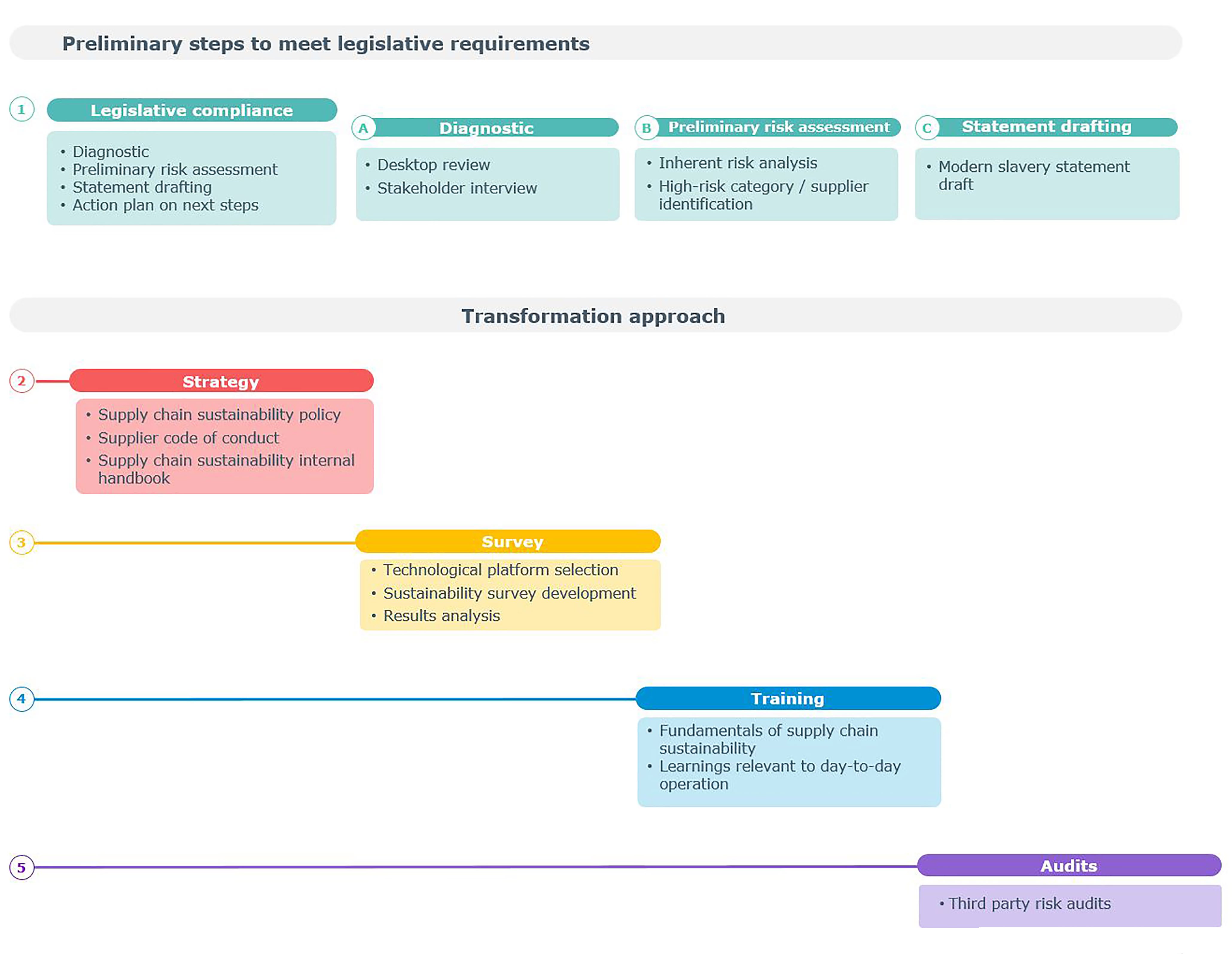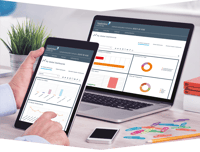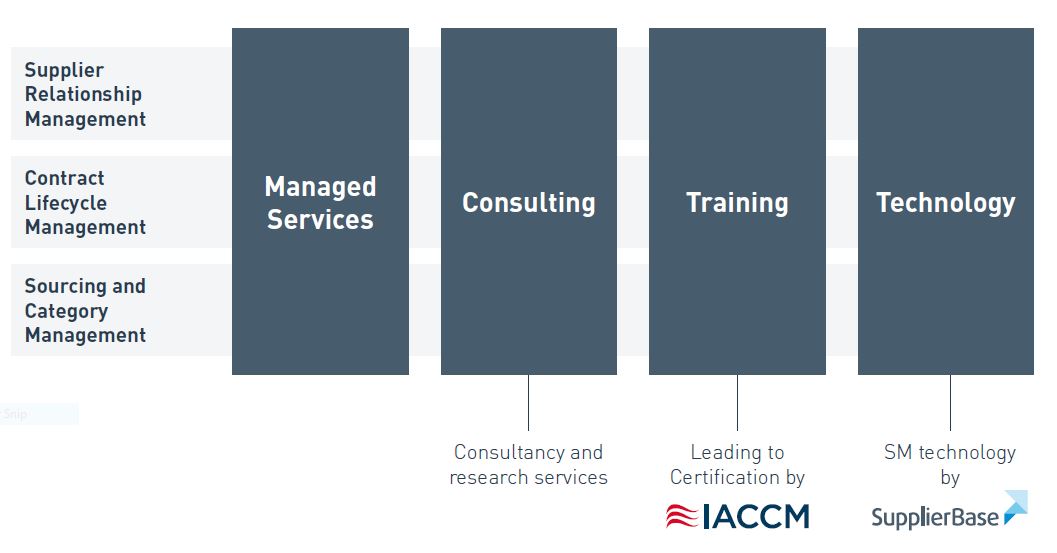In the last 30 years, the function of a supply chain has changed dramatically with a monumental shift to global sourcing, in order to reduce input costs. As a result, global firms now outsource manufacturing
and source materials from developing countries.
50%
of companies are unable to determine
the sustainability issues in their supply chains
The Sustainability Consortium, 2016
Only 25%
of firms have sustainability programs
in place to respond to regulatory requirements
McKinsey survey, 2011
Companies tend to focus on their top-tier suppliers,
but the real risks come lower down.
Harvard Business Review, 2020
+40 million people enslaved worldwide generating $150 billion of illegal profits
International Labour Organisation, 2014
Supply chain sustainability top business drivers
1 Improve operational efficiency and lower costs
2 Build, maintain, or improve corporate reputation
3 Align with business goal, mission or values
4 New growth opportunities
McKinsey survey, 2011
Only 6%
of companies are
ranking sustainability
as one of their top 3
business drivers for SRM
State of Flux research, 2018
A focus on modern slavery risks
Modern slavery and the seafood industry
Thailand is the world’s top exporter of tuna, and one of the biggest exporters of all fish. Its marine fishing industry is particularly prone to modern slavery due to its size, lack of regulation, extent of illegal operations, and exploitation of migrant workers.
There are more than 50,000 fishing vessels and about 500,000 workers in the industry. Investigations by groups including Greenpeace and the International Labour Organisation suggest the majority of those working on boats meet the definition of modern slavery – any situation where a person is forced to work under threat; is owned or controlled by their employer; dehumanised or treated as a commodity; and is not free to leave.
Are there any slaves in your supply chain? Contact Kate Skattang
Buoyancy film - Interview
Kate Skattang, Managing Director, Australia and New Zealand
at State of Flux
Modern slavery legislation: what are my obligations?
Australian Modern Slavery Act
The Modern Slavery Act 2018 was introduced by the Australian government to increase organisations’ accountability of their supply chains due to growing concern on human right violations and abusive labour practices. The act requires entities with consolidated revenue of over AUD$100 million to draft modern slavery statements, which must include:
- The risks of modern slavery in the supply chains of reporting entities and their subsidiaries.
- Actions taken to address those risks and be approved by the board of directors.
The business needs to ensure that it has carried out appropriate due diligence on its supply chains to identify and map direct, tier 2 and 3 suppliers and beyond, and identify country of origin in order to identify risk.
UK Modern Slavery Act
The Modern Slavery Act came into force in 2015 and requires organisations with a turnover exceeding £36 million, or over, to ensure that their business, and the supply chains used by the business, are free from modern slavery. The Act requires businesses to:
- Include an annual "modern slavery statement" in each annual report.
- A link to the statement must also be included on the website of the business.
How we can help
Identify high risk suppliers in your supply chain
Traditionally procurement organisations have focused on their direct suppliers in terms of managing risk, continuity of supply and quality, however with the introduction of new legislation require organisations to think in terms of their entire supply chain, not just their key tier one suppliers. This is a shift in thinking that contemporary procurement practices and systems are not geared for. As such, procurement, compliance and sustainability teams are all grappling with the issue of how to gain visibility of their supply chain beyond their direct suppliers and how to ensure sustainable practices further down the chain.
The modern slavery and supply chain sustainability roadmap

Supplier risk management technology
State of Flux' SupplierBase platform is designed to facilitate the onboarding and management of suppliers, to maximise value and reduce risk. SupplierBase helps assess and monitor third party risk through automated workflows, track risks against defined metrics and implement and track action plans.
The platform will increase your ability to manage a large number of suppliers within a complex supplier chain, and integrates with third party risk information providers to monitor supply chain, regulatory and cyber risks.






